

I am a future-facing marketer, entrepreneur, Strategic Advisor, CEO, and coach who has founded, grown and reinvented companies for over 25-years.
As the founder of Future Proof Advisors, I specialize in advising mid-market businesses and their executive teams on how to transcend growth-inhibiting barriers and achieve better outcomes. I started this business with a vision to create an ecosystem in which I could leverage the wisdom of the top subject matter experts I have worked with over the years to help solve the biggest problems facing businesses today (and tomorrow!).
I’ve often been referred to as a “pragmatic visionary” - someone who pairs innovative thinking with practical solutions. It is this approach, paired with firsthand experience, that puts me in the unique position to help entrepreneurs achieve success building, transforming, scaling, and selling their companies.
I pride myself on practicing what I preach. Not only do I advise existing companies, but I also create my own. Most recently, I co-founded RSVD, a SaaS business that provides digital capacity management solutions and smart queuing tech for the retail, food, and hospitality industries. After two years, I, along with my partners, flipped the business into a profitable exit.
Additionally, I co-founded Fanscape, one of the first-ever social media marketing agencies, which grew from an initial $10K investment to an eight-figure acquisition by Omnicom. After the sale, I joined the Marketing Arm (a division of Omnicom) as CEO of Digital, directing a 150+ person team responsible for social, mobile, and digital consumer engagement for the agency’s extensive Fortune 500 client roster (AT&T, Mars, Samsung, Gamestop, Novartis, Philips).
My career began in the music industry, culminating with my role as VP, Artist Development at Interscope / A&M Records (Universal Music Group). The experience I gained during this stage of my career paved the way for the launch of my own music management company AMP, where I worked to accelerate the growth of emerging artists including Taking Back Sunday.
As an Entrepreneur-In-Residence and member of the Board of Advisors at Loyola Marymount University, as well as a mentor to MBA Students at my alma mater, USC’s Marshall School of Business, I am dedicated to fostering the development of tomorrow’s leaders. I am a Chicago native currently residing in Los Angeles with my wife and two children, where I focus on giving back to my local community through charitable work with several homeless and environmental organizations.
Available For: Advising, Consulting
Travels From: Los Angeles
Speaking Topics: Digital Transformation, Leadership, Business Growth
| Terry Dry | Points |
|---|---|
| Academic | 0 |
| Author | 51 |
| Influencer | 77 |
| Speaker | 3 |
| Entrepreneur | 0 |
| Total | 131 |
Points based upon Thinkers360 patent-pending algorithm.
 How to Cast Your Advisory Board: Building a Dream Team for Your Business
How to Cast Your Advisory Board: Building a Dream Team for Your Business
Tags: Business Strategy, Entrepreneurship, Leadership
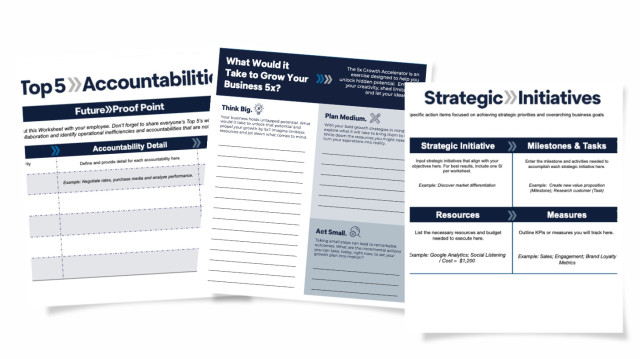 Plan Smarter: Tools to Kickstart 2025 with Confidence
Plan Smarter: Tools to Kickstart 2025 with Confidence
Tags: Business Strategy, Entrepreneurship, Leadership
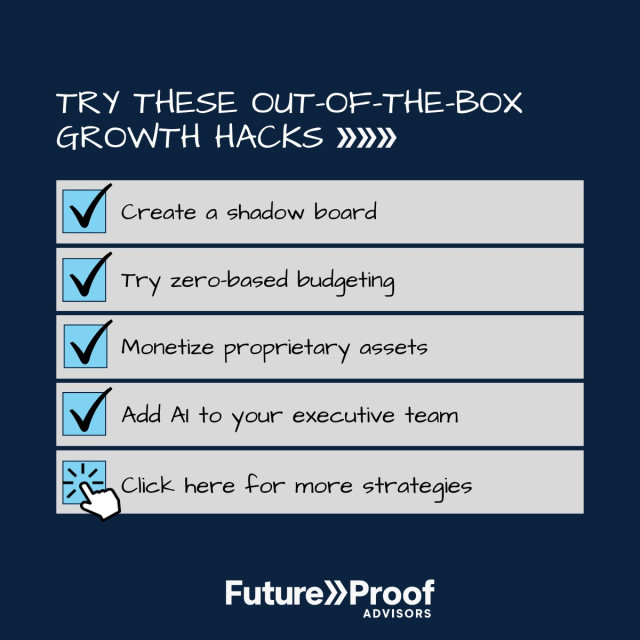 Unconventional Strategies for Rapid Future-Proof Business Growth
Unconventional Strategies for Rapid Future-Proof Business Growth
Tags: Business Strategy, Entrepreneurship, Leadership
 Building a Future-Proof Business: The Power of Inclusive Goal Setting
Building a Future-Proof Business: The Power of Inclusive Goal Setting
Tags: Business Strategy, Entrepreneurship, Leadership
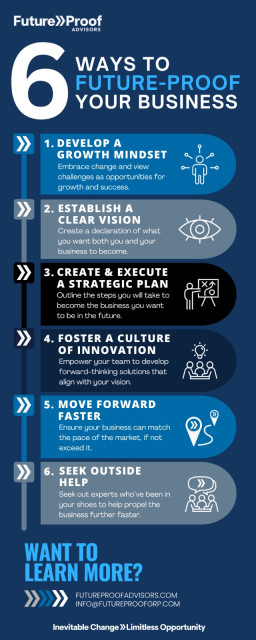 6 Ways to Future-Proof Your Business Today!
6 Ways to Future-Proof Your Business Today!
Tags: Business Strategy, Entrepreneurship, Leadership
 Unlocking Business Transformation in Just One Hour: The Power of Outside Guidance
Unlocking Business Transformation in Just One Hour: The Power of Outside Guidance
Tags: Business Strategy, Coaching, Entrepreneurship
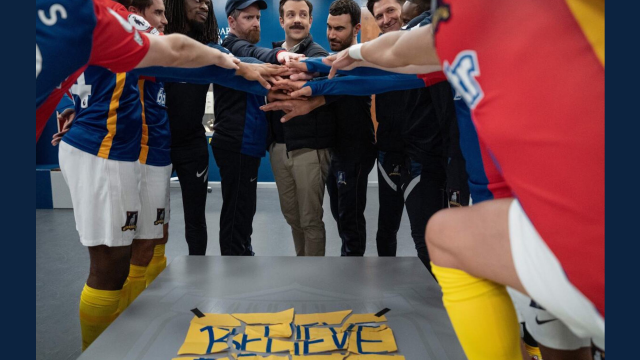 The Future of Work alongside Robots + AI with John McElligott & Frankie Russo- School of WHY Podcast
The Future of Work alongside Robots + AI with John McElligott & Frankie Russo- School of WHY Podcast
Tags: Business Strategy, Leadership, Future of Work
 Why You Should Add AI To Your Advisory Board
Why You Should Add AI To Your Advisory Board
Tags: AI, Business Strategy, Digital Transformation
Tags: Business Strategy, Future of Work, HR
 Struggling With Labor Shortages? Adjusting Your Workplace Policies May Be the Solution. 9 Future-Proof Updates You Should Make Today.
Struggling With Labor Shortages? Adjusting Your Workplace Policies May Be the Solution. 9 Future-Proof Updates You Should Make Today.
Tags: Entrepreneurship, Future of Work, HR
 Business Owners: How To Know When It’s Time to Replace Yourself As CEO
Business Owners: How To Know When It’s Time to Replace Yourself As CEO
Tags: Business Strategy, Entrepreneurship, Leadership
 8 Ways to Overcome a Sales Slump Starting Now
8 Ways to Overcome a Sales Slump Starting Now
Tags: Business Strategy, Customer Loyalty, Sales
 10 Ways to Future-Proof Your Business During a Recession
10 Ways to Future-Proof Your Business During a Recession
Tags: Business Strategy, Entrepreneurship, Risk Management
 From Disengagement to Empowerment: 6 Cost-Effective Strategies to Future-Proof Employee Engagement and Drive Business Success
From Disengagement to Empowerment: 6 Cost-Effective Strategies to Future-Proof Employee Engagement and Drive Business Success
Tags: Business Strategy, Culture, Future of Work
 Business Owners: The Great Resignation is Your Great Opportunity
Business Owners: The Great Resignation is Your Great Opportunity
Tags: Business Strategy, Future of Work, HR
 Want to Increase Your Company’s Enterprise Value? Think Beyond Just Revenue.
Want to Increase Your Company’s Enterprise Value? Think Beyond Just Revenue.
Tags: Leadership, Business Strategy, Mergers and Acquisitions
 Business Owners: Why You Need To Get Over Your Fear of Raising Prices Now
Business Owners: Why You Need To Get Over Your Fear of Raising Prices Now
Tags: Leadership, Business Strategy, Customer Loyalty
 What Does the Future of the Agency Look Like (Part 2)
What Does the Future of the Agency Look Like (Part 2)
Tags: Digital Transformation, Future of Work, Business Strategy
 Five Predictions for the Future of Business
Five Predictions for the Future of Business
Tags: Business Strategy, Digital Disruption, Digital Transformation
Tags: Business Strategy, Digital Transformation, Future of Work
 How to Set Up a Winning Hybrid Workforce
How to Set Up a Winning Hybrid Workforce
Tags: Business Strategy, Future of Work, HR
 10 Ways to Make Your Business Customer-Obsessed
10 Ways to Make Your Business Customer-Obsessed
Tags: Customer Experience, Digital Transformation, Customer Loyalty
 Thinking of Selling your Business? Ask Yourself These Four Questions First
Thinking of Selling your Business? Ask Yourself These Four Questions First
Tags: Entrepreneurship, Business Strategy, Mergers and Acquisitions
 Will the Empowered Consumer Impact the Future of the Big Social Networks?
Will the Empowered Consumer Impact the Future of the Big Social Networks?
Tags: Business Strategy, Marketing, Social
Tags: Business Strategy, Entrepreneurship, Future of Work
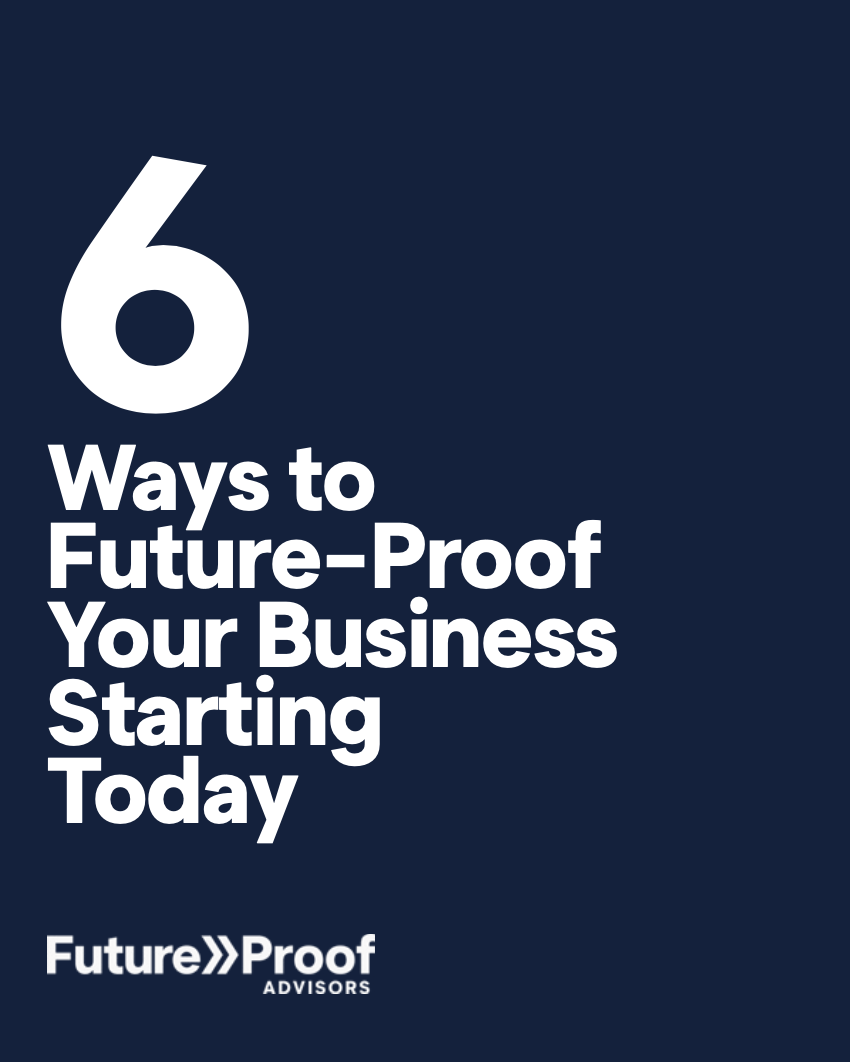 6 Ways to Future-Proof Your Business Starting Today
6 Ways to Future-Proof Your Business Starting Today
Tags: Business Strategy, Change Management, Leadership
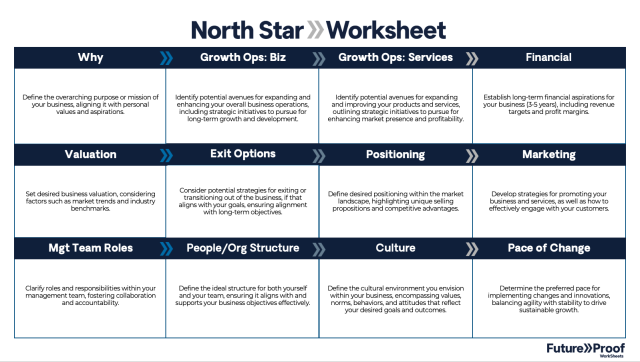 Introducing Our North Star Worksheet
Introducing Our North Star Worksheet
Tags: Business Strategy, Entrepreneurship, Leadership
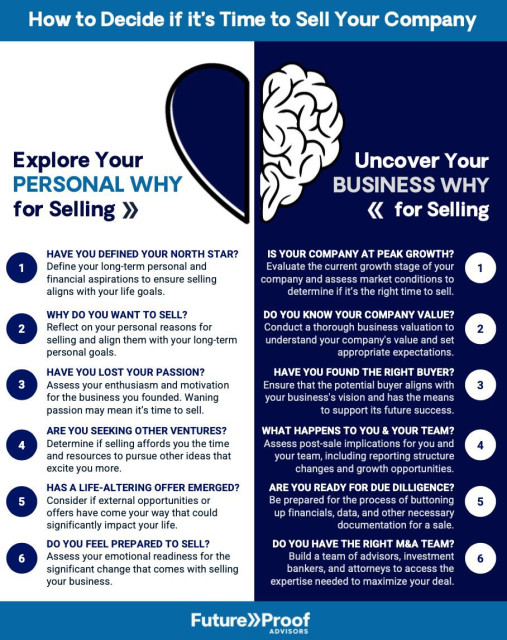 Thinking of Selling Your Business? Consider Personal & Business Motivations
Thinking of Selling Your Business? Consider Personal & Business Motivations
Tags: Business Strategy, Entrepreneurship, Mergers and Acquisitions
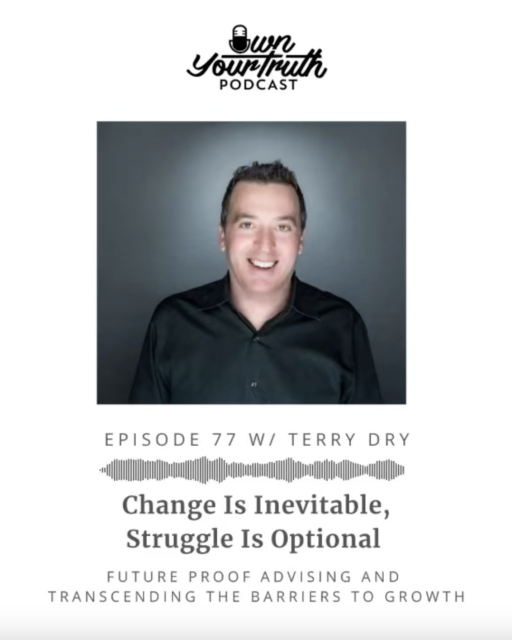 Terry Dry on Own Your Truth Podcast
Terry Dry on Own Your Truth Podcast
Tags: Emerging Technology, Entrepreneurship, Leadership
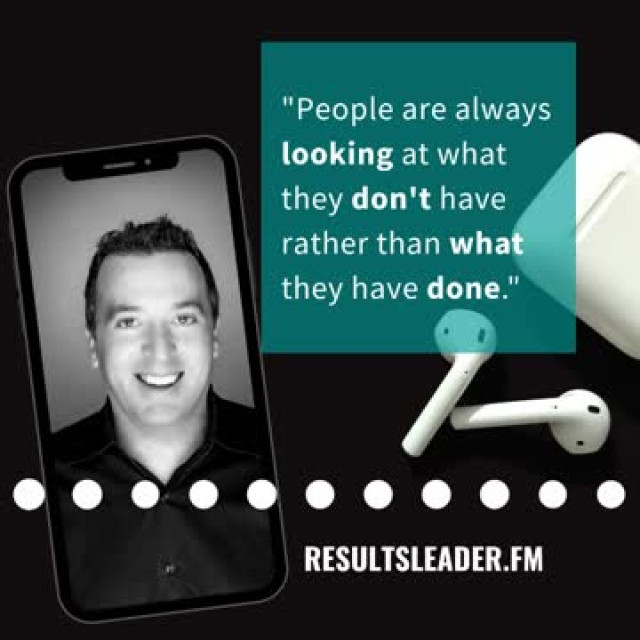 Results Leader Podcast
Results Leader Podcast
Tags: Business Strategy, Change Management, Coaching
Tags: Entrepreneurship, Innovation, Startups

Tags: Business Strategy, Entrepreneurship, Leadership
 From Start-Up Marketing Agency to 8-Figure Acquisition: Lessons From the Founder of Future-Proof Advisors
From Start-Up Marketing Agency to 8-Figure Acquisition: Lessons From the Founder of Future-Proof Advisors
Tags: Business Strategy, Entrepreneurship, Marketing
 Achieve Better Outcomes
Achieve Better Outcomes
Tags: Business Strategy, Entrepreneurship, Leadership
 Business Valuation Tips
Business Valuation Tips
Tags: Business Strategy, Entrepreneurship, Mergers and Acquisitions
 You Don't Have to Make Inordinate Wealth to Be Financially Free!
You Don't Have to Make Inordinate Wealth to Be Financially Free!
Tags: Business Strategy, Entrepreneurship

Tags: Business Strategy, Entrepreneurship, Leadership
 Overcoming The Obstacles That Prevent Business Growth With Terry Dry
Overcoming The Obstacles That Prevent Business Growth With Terry Dry
Tags: Business Strategy, Entrepreneurship, Leadership
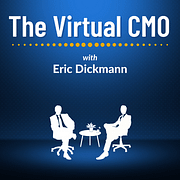 Overcoming Barriers & Future-Proofing Companies
Overcoming Barriers & Future-Proofing Companies
Tags: Marketing, Change Management, Business Strategy

Tags: Business Strategy, Change Management, Entrepreneurship
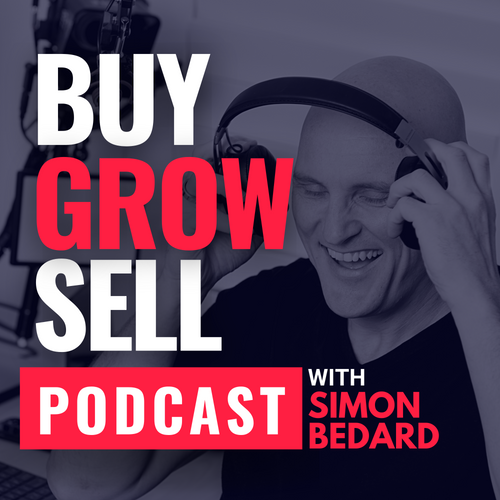 From Music Aficionado to a Million-dollar Earn-Out
From Music Aficionado to a Million-dollar Earn-Out
Tags: Change Management, Digital Disruption, Marketing

Tags: Digital Transformation, Marketing, Business Strategy
 How to Future-Proof Your Business
How to Future-Proof Your Business
Tags: Business Strategy, Digital Transformation, Marketing

Tags: Business Strategy, Digital Disruption, Entrepreneurship
 Getting Unstuck
Getting Unstuck
Tags: Digital Transformation, Entrepreneurship, Leadership
 Leadership Powered By Common Sense
Leadership Powered By Common Sense
Tags: Business Strategy, Customer Experience, Entrepreneurship
 Leveraging Existing Clients To 5X Your Revenue With Terry Dry / Sales Strategies for Consulting Businesses
Leveraging Existing Clients To 5X Your Revenue With Terry Dry / Sales Strategies for Consulting Businesses
Tags: Business Strategy, Marketing, Sales
 Winning at Business and Life Podcast
Winning at Business and Life Podcast
Tags: Business Strategy, Digital Transformation, Entrepreneurship
 Josh Bolton Show
Josh Bolton Show
Tags: Business Strategy, Digital Transformation, Marketing

Tags: Business Strategy, Change Management, Digital Transformation
 Insights Into Success
Insights Into Success
Tags: Digital Transformation, Entrepreneurship, Business Strategy
Tags: Business Strategy, Digital Transformation, Leadership
Tags: Business Strategy, Digital Transformation, Leadership
 Our Founder Terry Dry Shares His Thoughts on Post-Pandemic Marketing
Our Founder Terry Dry Shares His Thoughts on Post-Pandemic Marketing
Tags: Customer Experience, Digital Transformation, Marketing
Tags: Business Strategy, Leadership, Mergers and Acquisitions
Tags: AI, Business Strategy, Future of Work
 Beyond the Agenda: How Leaders Can Unlock Culture, Alignment, and Growth Through Better Team Off-Sites
Beyond the Agenda: How Leaders Can Unlock Culture, Alignment, and Growth Through Better Team Off-Sites
In today’s working world, running a successful team off-site is more than a meeting—it’s an opportunity to build culture, strengthen alignment, and create lasting impact, especially when teams are remote, hybrid, or spread across time zones.
These gatherings are rare chances to build culture, strengthen alignment, and reconnect your team to the mission and each other. When done right, they can reignite momentum, spark new ideas, and get everyone rowing in the same direction.
And yeah, it helps the bottom line too. Because when your team is energized, focused, and aligned, you’re far better positioned to evolve, scale, and create long-term enterprise value.
Here’s how I’ve seen these moments make a real difference—and how I’ve used them myself to move companies forward.
Sure, you’ll talk about growth, performance, and financial goals. But if you want real engagement, make it about your team. Celebrate what they’ve achieved and how their growth has driven the company forward. Show them that continued success is a result of their work, which creates opportunities for them, too.
Don’t be shy about sharing your enthusiasm, gratitude, and energy for your team and the business. Not saying you need to go full Steve Ballmer (though that clip is still a classic ), but genuine pride in your people goes a long way.
Look at the agenda from your team’s point of view. Why should they care? How does this connect to their day-to-day or their future?
Tie everything back to your mission, values, and a higher purpose. Talk about the real-world impact your company makes, and don’t forget to include personal and professional development opportunities for the team.
Workshops and breakout sessions shouldn’t focus only on the business. They should also support your team’s personal development. Consider including hands-on training (like AI tools), skill-building sessions, or roundtables on career progression. If people walk away with something tangible that applies to their personal goals, they’ll value the company even more for investing in them.
Use part of your summit to look ahead. Share two or three aspirational, future-facing “moonshot” goals that stretch the imagination and challenge your team to think bigger. What’s the boldest thing you’d love to accomplish in the next five years? Sharing those big ideas can inspire your team to think freely and feel uninhibited—and most importantly, make them want to help you achieve them.
Whether it’s an inspirational speaker, a futurist, or even a client panel, outside perspectives can energize your team and help shake things up. Hearing directly from clients about their challenges and how your work helps can also create a deeper sense of purpose and ownership.
Some of the best off-sites I’ve been part of had a mix of fun with a purpose and time to just hang out. We did team challenges (like building a giant puzzle out of canned goods for a homeless shelter—yep, that happened), and we made sure there was time for people to simply connect and just be themselves.
When employees work remotely or across offices, these face-to-face moments build trust and camaraderie faster than any slide deck. That’s why it’s important not to over-program the event—leave space for people to hang out and connect in a real way.
Your team wants to hear from you and the leadership team directly. A town hall Q&A, even if it comes with tough questions, is powerful. Be honest, share what you can, and lean into your values. It’s just as important to listen as it is to share—your team wants to feel heard. And chances are, you’ll learn something valuable from their questions too. I always did.”
Before the event, align with your leadership team: What are the 2–3 key messages or outcomes you want everyone to walk away with? How do you want them to feel when it’s over? Keep those goals in mind as you build the agenda.
Don’t let the summit energy fade once the meeting ends. Build in ways to keep it going (monthly check-ins, team rituals, shared progress tracking, etc.). A great summit should feel like the beginning of something, not just a one-off event.
If you’ve got the chance to bring your people together, use it. Culture, alignment, energy—they’re not just nice-to-haves. They’re how you grow. And when your team is doing great work and growing in their careers, company growth—financial and otherwise—follows naturally.
When you get this right, it’s not just a great meeting. It’s a launchpad for what’s next.
Tags: Careers, Culture, Leadership
 10 Ways to Tell a Better Story When You’re Selling Your Business (and Why It Matters)
10 Ways to Tell a Better Story When You’re Selling Your Business (and Why It Matters)
When it comes to selling your business, the numbers matter, but they’re only part of the picture. At Future Proof Advisors, we’ve sat in plenty of M&A meetings where a founder walks in with strong financials, an impressive deck, and a clear track record. But the meeting still falls flat. Why? Because buyers aren’t just buying your numbers. They’re buying your story (and you).
M&A presentations are often stacked with spreadsheets and financial models, but they too often miss the piece that truly drives the deal: a clear, compelling narrative. That story is what brings the numbers and the business to life. It’s not about replacing the data, it’s about giving it context. It’s your chance to help a potential buyer see what you’ve built, why it works, and where it’s going next.
Here are 10 storytelling tips we give founders to help them stand out in the M&A process, drawn from our real experiences on our own businesses and working with entrepreneurs every day:
Open with your founding story, your mission, and what inspired you to start the business in the first place. Buyers want a clear understanding of your vision.
Answer questions like: Why does your company exist? Why is this your passion? What problem are you solving?
Example: You launched your company after spotting a gap in the market or because you are passionate about solving a personal frustration. Bring that to life with a short anecdote.
We’ve seen founders instantly build credibility and a bond with the buyer just by explaining the moment they realized, “There has to be a better way, and it is their mission to figure it out.”
Revenue tells one story, but context tells the real one. Explain why the numbers are what they are. Was a recent dip due to a one-time event? Did a spike come from a smart strategic shift? Walk potential buyers through the story behind the performance.
Be prepared to talk about the highs and the lows with clarity and confidence. Transparency builds trust.
We’ve worked with several companies that saw a significant “COVID bump” between 2020 and 2022, followed by a decline as demand returned to normal. Instead of getting penalized for what looked like lost momentum, they were able to reframe it. This wasn’t a step back, it was a return to sustainable, normalized growth. When viewed over a longer time horizon, from pre-COVID through post-COVID, the trajectory still showed strong upward progress and long-term traction.
Don’t just say revenue grew. Show why it grew. What levers are pushing the business forward? Maybe it’s a referral program, a key partnership, a pricing shift, or a smart product bundling strategy. Buyers want to understand what’s working and what can be scaled.
They also want insight into the thinking behind your decisions. What strategic moves, pivots, or experiments led to real traction? Your numbers tell one story, but how you got there tells them even more. Often, buyers are just as focused on the strength of your leadership and decision-making as they are on the financials.
Some of the most valuable parts of your business might not show up on a P&L. Consider non-financial assets, including:
We also encourage founders to connect these assets to why they matter. Great team retention, proprietary tech, or a strong brand are powerful drivers of growth, resilience, and differentiation. The more you link non-financial strengths to strategic outcomes, the more powerful your story becomes.
For more on what non-financial assets to showcase, watch our video.
Numbers are great. But how do customers feel about your business? Use testimonials, engagement stats, or behavioral insights.
Example: "60% of our customers increased spend YOY, and 75% use our product weekly." Or, “We have an NPS score of X.”
We also recommend showcasing Lifetime Value (LTV) drivers, like subscription renewals, long-term use, or upsell rates. These behaviors tell a much stronger story about why your customers stick around and the value you bring.
No business is perfect. But how you talk about challenges matters. Frame setbacks as lessons that made you stronger. Explain how a hiccup led to innovation or operational improvements. If there’s a challenge you still haven’t fully solved yet, show the buyer how they could be the missing piece. Being able to show your humility, along with your resilience, can go a long way.
Example: “When COGS rose significantly, we dug in deeper, pivoted, and developed a variety of initiatives that in aggregate reduced those costs by 15% in year one, which unlocked $2M in profit.”
The key is not to hide the problem, but to show how solving it could generate a real upside.
Don’t just tell your past story, show where you’re going. Be specific. New markets, verticals, geographies. Paint a picture of your roadmap for the future, and how an acquisition can accelerate that.
In many cases, what you’re seeking is a strategic acquisition. That’s why it’s important to clearly articulate how the two businesses fit together and why the combination creates more value. What synergies exist? How could this deal be accretive for both sides? It all comes down to sharing a clear growth vision and mapping the path forward together.
Example: "We laid the foundation. And by integrating within your company/network, we can scale into three new markets and grow revenue by 30%, while also cross-selling your services to our client list."
Even though it’s a cliché, you want to demonstrate the “win-win” opportunity.
People drive value. Highlight leadership experience, team cohesion, and culture.
One of our favorite slides to see in Confidential Information Memorandum (CIM) is a quick “team dynamic chart” paired with short bios or highlights that show how your team works together and why it works so well.
We’ve also seen a simple but powerful tactic: have each leadership team member introduce a colleague. It’s a small move that reveals mutual respect, trust, and the kind of camaraderie that buyers care about.
We’ve seen deals accelerate because a buyer felt respect and a strong cultural fit with the team.
This part’s easy to overlook, but it’s one of the most important. Buyers aren’t just evaluating your deck, they’re evaluating you. How you show up with your energy in the room matters. Be confident, clear, and passionate. And most importantly, be yourself!
One of the most interesting comments we’ve heard came from a private equity buyer actively investing in a specific vertical: “I have to love the team and not hate the idea of the business.”
Buyers are looking for people they can trust and work with. Culture fit matters. Shared vision matters. Chemistry counts. And as the seller, you should be paying attention to that, too.
When it comes to your pitch deck, don’t just stack up data slides with boring labels. Use storytelling frameworks, visuals, and insights that make buyers lean in.
Your financials may spark interest, but your story is what makes the deal happen. Buyers want to see the purpose behind the business, the people driving it, and the possibilities ahead. That’s what builds confidence, creates alignment, and generates real excitement about what comes next.
If you’re thinking about selling, make sure you’re telling the full story. One that reflects your momentum, purpose, and potential. Deliver it clearly, practice it thoroughly, and lead with what makes your business worth betting on.
And remember, the storytelling goes both ways! Just like any great partnership, M&A is a two-way street. As the seller, you’re not just being evaluated, you’re evaluating too. Look for a buyer who shares your vision, communicates their strategy, and gives you confidence in the future of what you’ve built.
---------
We’ve helped founders shape their story and stand out in the M&A process. Reach out to us to learn more: info@FutureProofGrp.com
Tags: Business Strategy, Entrepreneurship, Mergers and Acquisitions
 Standing on the Shoulders of Giants: Why Getting Acquired Can Be Your Ultimate Growth Strategy
Standing on the Shoulders of Giants: Why Getting Acquired Can Be Your Ultimate Growth Strategy
Ever thought about selling your business as the best way to grow? Many entrepreneurs typically focus on entering new markets, launching innovative products, or improving services. While these are great strategies, there's another approach that often gets overlooked: getting acquired. This isn't just an exit strategy—it’s a powerful way to propel your business forward at an incredible pace. By standing on the shoulders of giants—leveraging the strengths and resources of a larger strategic partner—you can reach heights that would be hard to achieve on your own.
I’ve walked this path myself. In 1998, I co-founded Fanscape, one of the first social-media marketing agencies, with just a $10,000 investment. We grew Fanscape into a trailblazer in its field, but eventually, we hit a crossroads. Despite our success, the economy took a downturn, and our loyal clients couldn’t increase their budgets. Plus, bigger, more established, agencies started adding social media services to their offerings. Growth stalled, and we faced a choice: keep struggling against tough economic times and larger, new competitors, or make a move to continue to grow our business, build on our vision, and improve the lives of our employees while providing even more value to our clients.
Enter Omnicom, one of the largest holding companies of agencies in the world. We had partnered with them for years before deciding to sell. When they acquired us, it wasn’t just about the financial reward. It was about the incredible opportunities that came with joining a larger company as a true strategic partner. We gained access to resources, technologies, and markets that had previously been out of reach, allowing us to grow, scale, and outpace competitors rapidly, all while still retaining a leadership role and financial upside.
Being acquired wasn’t the end of our journey - it was a new beginning that allowed us to realize our full potential. Selling your business can be a catalyst for explosive growth and innovation, unlocking doors to opportunities you never knew existed. That’s why I want to share with you insights as to why selling your business should be considered a key growth strategy.
Why should you, as an entrepreneur, consider getting acquired as a serious growth strategy? Here are a few reasons that may resonate:
Sure, selling your company comes with a ton of growth benefits, but it’s also an emotional rollercoaster. As entrepreneurs, we’ve put our blood, sweat, and tears into our businesses, so the idea of letting go can be really tough. But here’s the thing: selling doesn’t have to be viewed as giving up—it can be about opening up new doors for growth and success.
When we sold Fanscape, the social media agency I co-founded with my business partner Larry, it was a bittersweet moment for us. We had built it from the ground up, with a dedicated team and loyal clients relying on us. The idea of handing over any level of control was unsettling. But we realized that selling wasn’t the end—it was the start of an exciting new chapter with a strategic partnership. It provided us with resources and opportunities beyond what we could reach as an independent company.
Here are some tips on how to navigate the emotional and strategic challenges of selling your business, learned from my personal experiences:
Facing these emotional and strategic challenges alone inspired me to start Future Proof Advisors. I wanted to help other business owners achieve growth and overcome barriers with guidance from someone who’s been in their shoes. At Future Proof Advisors, we use our experience and expertise to guide businesses through the complexities of running a business—including selling and scaling—so you can spot opportunities and get ahead faster.
Once you've decided that selling your business is the optimal move to foster growth, the next crucial step is finding the right partner. This decision requires careful consideration of several factors to ensure the partnership is beneficial for both parties. What to look for:
(Looking for ways to improve your enterprise value in preparation for a sale? Check out our blog here for tips.)
Selling your business doesn’t mean you have to completely give up control or abandon your vision. Many entrepreneurs successfully negotiate terms that allow them to stay involved and ensure their company’s legacy continues. On the other hand, if you prefer to step back, you can still make sure your business thrives without your daily involvement. Outline the role you want post-acquisition, whether it’s a board membership, senior management position, advisory role, or none of the above. Specificity and transparency help finalize the deal and clarify expectations.
When Fanscape was acquired by Omnicom, they wanted the founders to stay involved and actively lead the business. An earn-out deal encouraged me to stay on as CEO, preserving Fanscape’s strategic direction, mission, and culture while leveraging Omnicom’s resources for growth. In contrast, when RSVD was acquired, it made more sense for me to step back quickly while ensuring key team members and clients remained. This allowed me to pursue new ventures, knowing RSVD’s legacy would continue. The choice is a personal one.
(Thinking of selling your business? Ask yourself these questions first)
After an acquisition, you can focus on what you do best and enjoy the most. This is your opportunity to redefine your role based on your strengths and interests. Whether you choose to stay deeply involved in daily operations or take on a more strategic advisory role, aligning your new position with your passion is key.
(Is it time to step down as CEO? Read our blog to find out if it’s time to replace yourself).
Being acquired by a strategic partner is a powerful growth strategy for scaling your business and achieving its full potential. It's not about giving up but leveraging a larger entity's strengths to reach your goals faster and more effectively. Tapping into the resources, capital, and expertise of an established partner can amplify your vision and extend your legacy beyond what you could achieve alone.
Selling your business opens doors to opportunities that drive significant change and help you achieve personal and professional goals more efficiently. Remember, selling your business isn’t the end—it’s a strategic move to unlock new possibilities and drive growth. Embracing this approach can help your business reach new heights.
---
At Future Proof Advisors, we believe in supporting the whole entrepreneur by blending personal and professional goals to create a balanced and fulfilling life. We help you identify your true aspirations and how your business can support them. If you're looking for unconventional ways to accelerate growth or considering a sale, our experienced advisors can guide you through the process, ensuring you continue to contribute meaningfully while achieving your objectives. With our help, you can shape a future that supports the life you want to live, rather than letting your business dictate your path.
Contact me at Terry@FutureProofGrp.com to learn how we can help.
Tags: Business Strategy, Entrepreneurship, Mergers and Acquisitions
 Unconventional Strategies for Rapid Future-Proof Business Growth
Unconventional Strategies for Rapid Future-Proof Business Growth
Traditional growth strategies may fall short of delivering rapid transformation in our fast-paced business world. To truly future-proof your business and spur significant growth, embracing unconventional methods can be the key.
Each of these strategies challenges the conventional routes to business growth, providing new avenues to not just succeed but excel in today’s competitive landscape. Embracing even one or two could set your business on a future-proof path to rapid transformation and long-term success.
---
Want even more out-of-the-box strategies for growing your business? Reach out to me at Terry@FutureProofGrp.com.
Tags: Business Strategy, Innovation, Mergers and Acquisitions
 Building a Future-Proof Business: The Power of Inclusive Goal Setting
Building a Future-Proof Business: The Power of Inclusive Goal Setting
In today’s fast-paced business world, success isn’t just about keeping up with trends or beating the competition. It's about creating an environment where every team member feels connected to the company's vision and empowered to contribute meaningfully. One powerful strategy for making this happen? Inclusive goal-setting, where everyone's involved in shaping the company's future.
At Future Proof Advisors, we've seen firsthand how inclusive goal-setting can transform a business. By inviting input from all levels, mid-market, and emerging businesses can empower their employees and increase their chances of achieving long-term, future-proof success. Cultivating ownership across the team ignites passion and ensures everyone is accountable for reaching those shared goals.
Traditionally, setting goals has been the sole responsibility of leadership or executive teams. However, this approach often overlooks the invaluable insights and perspectives of your employees. Leaders might think they have all the answers or sometimes they have a fear of giving up control. But by not tapping into the collective wisdom of the team, businesses can miss out on valuable opportunities, while also risking eroding trust and engagement.
A clear mission, vision, and purpose are the guiding stars for any business—they define its identity. But as the world changes and your company grows, these guiding principles may need a refresh. While it's the leader's responsibility to cast and communicate the vision, involving the team in bringing it to life is key.
To future-proof your business, engaging your employees in actualizing the mission and vision you've established is a must. This inclusive process ensures that your core values resonate with your team, making them feel more invested. And as the world changes, so do people’s values. By granting your team a degree of ownership over the company's vision, you not only maintain its relevance and attractiveness to potential talent but also significantly enhance buy-in. Plus, when your team feels like they’re a part of the journey, they’re more likely to stick around, helping to build a strong company culture that sets you up for success in the long run.
Here's why involving your team in goal setting is beneficial to your business:

Navigating an inclusive goal-setting approach can pose challenges, especially when it comes to getting started and keeping things on track. Finding the right balance is key, ensuring that a variety of opinions and ideas don't veer off course from the overarching vision. Staying organized is incredibly important. As a leader, you set the North Star, setting the course of success. But you’re not alone in this journey. Your team is right there beside you contributing to shaping and executing that vision.
Setting shared goals and updating your company's vision isn't a one-and-done task. It's crucial to maintain open lines of communication with your team, reinforcing these objectives regularly. Leaders may wrongly assume their vision is universally understood and remembered, but this is rarely the case, especially amidst the hustle of daily operations. To keep everyone on the same page, actively remind and engage your team through various methods, be it meetings, emails, or your company’s internal chat platforms. By staying in touch, you're not only reminding everyone of the big picture but also keeping that shared vision front and center.
Consistently sharing progress made towards achieving these goals is also essential. Mere reminders of the goals themselves aren’t enough - it’s about showing your team how each step forward contributes to the company’s overall success. Remember, everyone wants to know they’re making a difference.
Involving your team from the outset in the goal-setting process is pivotal for creating a resilient and future-proof business. By tapping into the collective wisdom and energy of your workforce, you're not just driving growth and innovation but also fostering a culture of ownership and dedication among your team. From start to finish, this approach ensures that everyone feels empowered to contribute to shaping the company's future.
-------
At Future Proof Advisors, we are committed to guiding companies on this journey toward success, advocating for a shift from traditional top-down methods to a more dynamic, collaborative strategy. Reach out to us to discover how we can lend a hand in steering your organization toward its goals: www.FutureProofAdvisors.com / info@FutureProofGrp.com.
Tags: Business Strategy, Culture, Leadership
 Are You Falling Out of Love with Your Business? Discover 10 Ways to Reignite the Spark
Are You Falling Out of Love with Your Business? Discover 10 Ways to Reignite the Spark
The past few years have thrown some curveballs at mid-market businesses. Economic uncertainty, staffing challenges, and unpredictable market swings have left many owners feeling worn out. At Future Proof Advisors, we're right there in the trenches with these companies, helping them navigate through all the ups and downs. And as entrepreneurs ourselves, we get it. We know firsthand how exhausting it can be to keep pushing forward when it gets tough.
Feeling overwhelmed is natural. What's important is how you respond. We've learned a thing or two about shaking off that burnout and rediscovering your love for your business. So, if you're feeling stuck, try these 10 strategies to help you regain your momentum.
Even after trying these strategies and doing a lot of self-reflection, what if you still feel disconnected from your business? Sometimes, despite our best efforts, the spark just doesn't reignite. That's when you might start thinking about what's next.
Maybe it's time to shake things up a bit. You could consider switching up your role within the company or passing the baton to someone else who's ready to take the reins. And selling the business might even be on your mind. If that's the case, these questions can help guide you through the decision-making process.
It could also be that you've realized your business needs a major facelift to keep up with the times. Markets change, customer needs evolve, and sometimes, what worked before just doesn't cut it anymore. Hanging onto outdated ways of doing things isn't doing you or your business any favors.
Recognizing that your business has outgrown its original purpose or that your leadership style needs a refresh isn't a sign of failure—it's a chance to grow. Embracing change means being open to new possibilities and being willing to let go of what's not working anymore. Remember the age-old saying, "If you love something, set it free. If it comes back, it's yours. If not, it was never meant to be"? Well, it applies to business too!
Rediscovering your passion for your business again is possible, even in the face of setbacks. By shifting your mindset, reconnecting with your passion, and getting back on track, you can reignite that entrepreneurial spark.
But, remember, the journey to falling back in love with your business is not just about overcoming obstacles, it's about crafting a future that excites you and aligns with your aspirations. Along this path, you might uncover a newfound appreciation for the company you've built, discover parts of yourself and your business you hadn't considered before, and yes, at times, you may even find it necessary to let go and set your business free. Whatever direction you take, embracing these strategies can equip you with the tools to make decisions that align with your vision and propel your business toward a thriving future.
Tags: Entrepreneurship, Leadership, Mental Health
 Navigating Entrepreneurship Later in Life: 5 Tips for Success
Navigating Entrepreneurship Later in Life: 5 Tips for Success
Navigating entrepreneurship later in life holds profound personal significance for me. It's a journey that resonates on a deep level because I've personally experienced the highs and lows of entrepreneurship throughout my career. With the benefit of hindsight, I feel far more capable and confident than I did in my younger days. And I’m not alone. Entrepreneurship isn't just a game for the young anymore. Would you believe that people aged 55 and up are stepping into the entrepreneurial arena more than those in their 20s and 30s? There's a growing trend that's rewriting the rules, and it's all about starting a business later in life. And these “late bloomers” aren’t just surviving - they’re thriving. It might surprise you to learn that a 60-year-old startup founder is 3x more likely to succeed than their 30-year-old counterpart!
So, what’s driving this trend? Well, it boils down to experience. As the saying goes “With age comes wisdom.” But it's more than that. It's also about the connections we've built, the relationships we've cultivated, and sometimes, having a bit more financial cushion or, at the very least, a better grasp of our finances. And let's not forget about the operational and execution skills we've honed over the years. The significance of that "been there, done that" mindset cannot be underestimated when it comes to being better prepared for the inevitable curveballs that life throws at us.
The entrepreneurial landscape is undergoing a transformation. Founders over the age of 45 now make up a third of all new entrepreneurial activity. And here’s an eye-opener: 42% of entrepreneurs over 50 aren't starting businesses out of necessity; they're doing it because they're deeply passionate about their ideas.
I can personally relate to the desire to embark on an entrepreneurial journey later in life because I've walked that path myself. My entire adult life has been dedicated to entrepreneurship, and along the way, I've been fortunate as I’ve accumulated a wealth of knowledge and transformative experiences – some gained through mistakes, while others through successes. In the early stages of my career, I co-founded a marketing agency that exited to a public company. My second venture, a SaaS business that I started in my late 40s, sold faster and more seamlessly than my first. These experiences, complete with all their struggles and triumphs, eventually led me to establish one of the companies that I run today - Future Proof Advisors. My mission is to help entrepreneurs avoid the pitfalls I once encountered and provide them with shortcuts to get further faster. Launching this venture at a younger age wouldn't have been feasible simply because I hadn't amassed the wealth of experiences and established the relationships that now enable us to provide invaluable guidance to our member companies.
So, if you're contemplating embarking on an entrepreneurial adventure in your later years, here are five practical tips that have not only shaped my path but continue to influence the way I approach the world of business.
Embracing entrepreneurship later in life can be incredibly rewarding, both on a personal and professional level. The notion that age should limit your success in the business world is a misconception we must dispel. We're witnessing a seismic shift in mindset, with more older adults pursuing new opportunities, proving that the entrepreneurial spirit knows no age limit.
So, whether you're fueled by a long-held passion, the desire to create something new, or simply the pursuit of a fulfilling and balanced life, always remember this: age can be your greatest asset. Your life experiences, the relationships you’ve nurtured, and the wisdom you’ve accumulated along the way are all powerful tools in your entrepreneurial arsenal.
Drawing from my own experiences and as someone who now dedicates their expertise to supporting entrepreneurs and older adults, I can wholeheartedly vouch for the immense potential that entrepreneurship holds at any age. Embrace the opportunities that come your way, prioritize your personal goals, carve out a work-life balance that resonates with you, never shy away from well-calculated risks, stay tech-savvy to harness the power of innovation, and, above all, tap into the wealth of expertise and relationships you've cultivated over the years. These guiding principles aren't just a roadmap; they're your compass for not only achieving success but also thriving as an entrepreneur later in life.
Here's to your future success, no matter where you find yourself on life's remarkable journey!
--------
Have questions or want more entrepreneurial tips? Connect with me on LinkedIn, drop me an email at Terry@futureproofgrp.com, or subscribe to my newsletter.
Tags: Business Strategy, Careers, Entrepreneurship
 How to Cast Your Advisory Board: Building a Dream Team for Your Business
How to Cast Your Advisory Board: Building a Dream Team for Your Business Terry Dry on Own Your Truth Podcast
Terry Dry on Own Your Truth Podcast Plan Smarter: Tools to Kickstart 2025 with Confidence
Plan Smarter: Tools to Kickstart 2025 with Confidence